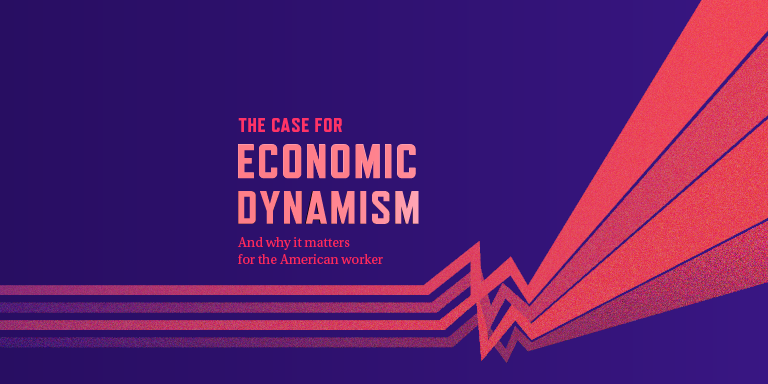Working Americans have far more to lose from an economy that is changing too little and too slowly than from one that is quickly adapting and advancing to new frontiers. But in recent decades, policymakers have ignored signs that the dynamic mechanisms at the heart of our economy were growing weaker. Worse still, policy failures at every level of government have contributed to the sclerosis that has slowly robbed the country of its vitality. From NIMBYs to non-competes, vested interests have steadily weighed the economy down with artificial barriers to mobility, competition, and adaptation. These barriers have made our economy less abundant in opportunity and less able to improve the lives of ordinary Americans.
How can we restore American dynamism and build an economy in which workers can truly thrive?
That question is at the heart of a new paper, “The Case for Economic Dynamism and Why it Matters for the American Worker.”
It is a popular myth that the 21st century has been a period of unprecedented economic change and transformation. In reality, American dynamism has been in a decades-long retreat. In the years leading up to the Covid-19 pandemic, startup rates languished near all-time lows. Fewer companies were going public. Corporate America looked old and complacent. Increasingly, too, did American demography. Productivity growth decelerated in spite of promising new technologies. And a country whose people were once known for their restless, pioneering spirit became increasingly stuck in place.
To the surprise of many observers, the pandemic has jolted several key indicators of economic dynamism–at least temporarily–back to life, as Americans are switching jobs and starting businesses at rates not seen in decades. Look beyond the current momentum, however, and it remains clear that powerful headwinds are working against a return to the high-churn qualities that once characterized our economy. These headwinds include our demographic transformation into a rapidly aging society with minimal population growth, a drastic slowdown in the velocity with which knowledge moves through the economy, and the sclerotic buildup of vested interests, domineering incumbents, and veto-wielding stakeholders throughout economic and social life. The weight of these forces makes it harder to build, move, switch jobs, start firms, and compete in the United States, and each calls for a forceful policy response.




